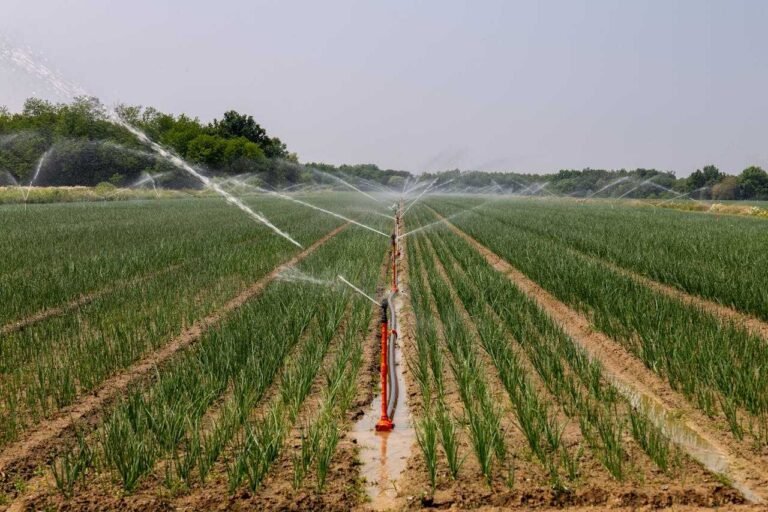Does Harvesting Cinnamon Kill the Tree?
Cinnamon is one of the most loved spices in the world. It brings warmth to our food, from morning oatmeal to festive holiday treats. But have you ever stopped to wonder—how do we actually get cinnamon? And more importantly, does harvesting it harm or even kill the tree?
The simple answer is no, as long as it’s done the right way. Cinnamon comes from the inner bark of the tree, and farmers carefully cut the branches, not the whole tree. In fact, a well-managed cinnamon tree can keep growing and producing bark for decades. But if people harvest it irresponsibly, it can damage the tree and even lead to deforestation.
In this guide, we’ll take a closer look at the fascinating process of cinnamon harvesting. We’ll hear from real farmers, experts, and researchers who have spent years studying sustainable practices. We’ll also explore how you, as a consumer, can make choices that support ethical cinnamon farming. Let’s dive in and uncover the truth about this spice that’s been cherished for centuries!

In This Article
- Understanding the Cinnamon Tree
- How is Cinnamon Harvested?
- Does Harvesting Cinnamon Harm the Tree?
- Sustainable Cinnamon Farming Practices
- Personal Story: A Farmer’s Perspective
- How You Can Support Sustainable Cinnamon Farming
- Conclusion
Understanding the Cinnamon Tree
Cinnamon doesn’t just magically appear in jars on grocery store shelves—it starts as the bark of a tree. The cinnamon tree belongs to the Cinnamomum genus and thrives in warm, tropical climates. There are two main types that are widely cultivated:
- Cinnamomum verum (True or Ceylon Cinnamon) – This type is native to Sri Lanka and parts of South India. It has a delicate, sweet flavour and is considered the “real” cinnamon by purists.
- Cinnamomum cassia (Cassia Cinnamon) – Grown mostly in China, Indonesia, and Vietnam, cassia cinnamon has a bolder, spicier taste and is what you’ll commonly find in supermarkets.
In the wild, these trees can grow 10–15 meters (33–50 feet) tall, towering over plantations like gentle giants. However, on farms, they are pruned and kept smaller—around 3 meters (10 feet)—to make harvesting easier and encourage healthy regrowth. Farmers carefully strip the inner bark from young branches rather than chopping down entire trees. This means that cinnamon trees can keep producing for decades, making them a truly renewable resource when farmed responsibly.
How is Cinnamon Harvested?
Harvesting cinnamon isn’t like picking fruit or cutting down a tree for timber. It’s a delicate process that involves peeling the inner bark of the tree. When done correctly, this method allows the tree to continue growing and producing cinnamon for decades. Here’s how the process works:
Step 1: Choosing the Right Tree
Cinnamon trees need to mature for about 2 to 3 years before they’re ready for harvest. This ensures the inner bark has developed enough of its signature flavour and aroma. Farmers usually wait for the rainy season because moisture helps loosen the bark, making it easier to peel without damaging the tree.
Step 2: Cutting and Peeling
Instead of cutting down the whole tree, farmers carefully prune young branches. First, they remove the rough outer bark, revealing the smooth, fragrant inner layer. Using small knives, they skillfully peel the inner bark into long strips, which then curl up naturally as they dry—this is how we get those familiar cinnamon quills you see in stores.
Step 3: Regrowth and Sustainability
One of the most incredible things about cinnamon trees is their ability to regrow after harvesting. Once a branch is cut, new shoots sprout from the stump, meaning the same tree can keep producing cinnamon for decades. Farmers return every couple of years to harvest again, ensuring a continuous and sustainable supply.
By following this method, cinnamon farming remains eco-friendly and renewable, making it one of the most sustainable spice crops in the world.
Does Harvesting Cinnamon Harm the Tree?
Harvesting cinnamon does not kill the tree as long as sustainable practices are followed. However, unsustainable practices, such as over-harvesting or improper cutting, can lead to declining tree health and even death. It all comes down to how the bark is removed and whether the tree is given time to regenerate. Done correctly, cinnamon farming is not only sustainable but also beneficial to the environment.
Expert Insights
Dr. D.K. Pushpakumara, an expert in agroforestry in Sri Lanka, explains:
“Cinnamon trees are incredibly resilient. With proper pruning techniques, they continue to regenerate, making them one of the most sustainable spice crops. However, reckless overharvesting and poor plantation management can lead to tree death.”
Cinnamon trees naturally sprout new shoots when branches are cut correctly. Farmers who follow sustainable methods carefully remove only the bark from select branches rather than cutting down entire trees. This allows the tree to continue growing and producing cinnamon for decades.
Real-World Case Study: Sustainable vs. Unsustainable Harvesting
| Factor | Sustainable Harvesting | Unsustainable Harvesting |
|---|---|---|
| Method | Selective branch cutting | Full tree cutting or improper pruning |
| Impact on Tree | Continues to regrow | Risk of tree death |
| Environmental Effect | Supports biodiversity | Can lead to deforestation |
| Longevity of Harvesting | 30+ years | Short-term gains, long-term loss |
Key Takeaway: When farmers prioritise long-term sustainability over quick profits, cinnamon trees thrive and keep producing for generations. But when unethical methods strip the tree bare or destroy its root system, it may not survive another season.
Scientific Studies on Cinnamon Sustainability
Research from the National Cinnamon Research and Training Centre (NCR&TC) in Sri Lanka highlights the importance of sustainable cinnamon cultivation practices. Well-managed plantations benefit from enhanced tree survival rates and long-term productivity, while poor management and excessive harvesting can lead to significant declines in yield and soil health.
Additionally, according to the International Union for Conservation of Nature (IUCN) and the Royal Botanic Gardens, Kew, Cinnamomum verum has not yet been formally assessed for conservation status. However, experts emphasise that irresponsible farming practices, such as soil degradation and habitat destruction, could pose future risks to its sustainability.
Lean More: How to Plant and Grow Garlic
Sustainable Cinnamon Farming Practices
To ensure cinnamon cultivation remains sustainable, farmers follow best practices such as:
1. Coppicing
Coppicing is a technique where farmers cut branches close to the ground, allowing new shoots to sprout from the stump. Instead of killing the tree, this method helps it grow back stronger.
Think of it like a haircut—just as your hair grows back healthier, so does the cinnamon tree! With this practice, a single tree can keep producing cinnamon for decades, making it a renewable source rather than a one-time harvest.
2. Agroforestry
Many sustainable farmers don’t just grow cinnamon alone. They plant it alongside crops like pepper, cardamom, and coffee. This method, called agroforestry, makes the soil richer, improves biodiversity, and protects against plant diseases.
Imagine a thriving, green jungle where different crops support each other instead of endless fields of just one plant—that’s the goal of agroforestry!
3. Organic Farming
Pesticides and chemical fertilisers can damage soil health and biodiversity. Instead, organic cinnamon farmers use natural methods like composting and companion planting to keep their crops healthy.
When you buy organic cinnamon, you’re not just avoiding harmful chemicals—you’re also supporting cleaner air, healthier soil, and safer conditions for farm workers.
4. Ethical Sourcing and Certifications
Not all cinnamon is grown sustainably, but some certifications help you make an informed choice.
Look for labels like:
- Fair Trade Certified – Ensures farmers get fair wages and work under safe conditions.
- Rainforest Alliance Certified – Protects forests and supports sustainable farming.
- Organic Certification – Guarantees that no synthetic pesticides or harmful chemicals were used.
When you choose ethically sourced cinnamon, you’re making a huge difference—helping small farmers, preserving forests, and ensuring cinnamon trees continue to grow for future generations.
Personal Story: A Farmer’s Perspective
The Runage family, generations-old cinnamon farmers in Sri Lanka, share their experience:
“My grandfather taught me that a cinnamon tree is like a gift that keeps on giving. We never cut the whole tree—only branches. Over the years, we’ve seen the same trees continue to thrive. The key is patience and respect for nature. By carefully cutting branches at an angle, we allow the trees to regrow, ensuring that future generations can continue this tradition.”
Learn More: Do Blackberries Grow on Trees?
How You Can Support Sustainable Cinnamon Farming
As a consumer, you have the power to influence sustainable cinnamon production. Here’s how you can contribute:
1. Choose Responsibly Sourced Cinnamon
Not all cinnamon is created equal. Some brands ensure their cinnamon is grown using sustainable methods that protect forests and pay fair wages to farmers. When shopping, look for these labels:
- Fair Trade Certified – Ensures farmers receive fair wages and work in ethical conditions.
- Rainforest Alliance Certified – Supports environmentally friendly farming and better livelihoods for workers.
- Organic Cinnamon – Reduces chemical use, making it safer for farmers, consumers, and the environment.
2. Be Wary of Cheap, Mass-Produced Cinnamon
If a cinnamon product is suspiciously cheap, there’s a chance it was sourced from unsustainable or unethical farms. Sustainable cinnamon might cost a little more, but it supports responsible farming and better working conditions. Your purchase matters!
3. Spread Awareness
Many people don’t realise that their everyday cinnamon might come from unsustainable sources. Share what you’ve learned with family, friends, and social media to encourage responsible buying habits.
4. Support Sustainable Brands
Some well-known brands committed to ethical cinnamon farming include:
- Frontier Co-op
- Simply Organic
- Ceylon Golden Cinnamon
By choosing sustainably sourced cinnamon, you’re not just getting a higher-quality spice—you’re protecting forests, supporting farmers, and ensuring that future generations can enjoy cinnamon just as much as we do today.
Conclusion
Cinnamon harvesting, when done correctly, does not kill the tree. In fact, with proper care, a single cinnamon tree can provide bark for decades. Sustainable farming ensures that we continue to enjoy this beloved spice without harming the environment.
So, the next time you sprinkle cinnamon on your latte or oatmeal, take a moment to appreciate the centuries-old tradition of responsible cinnamon farming. By choosing ethically sourced cinnamon, you’re playing a role in preserving this precious spice for future generations.
Do you have questions about cinnamon harvesting? Let’s keep the conversation going! Share your thoughts below.







